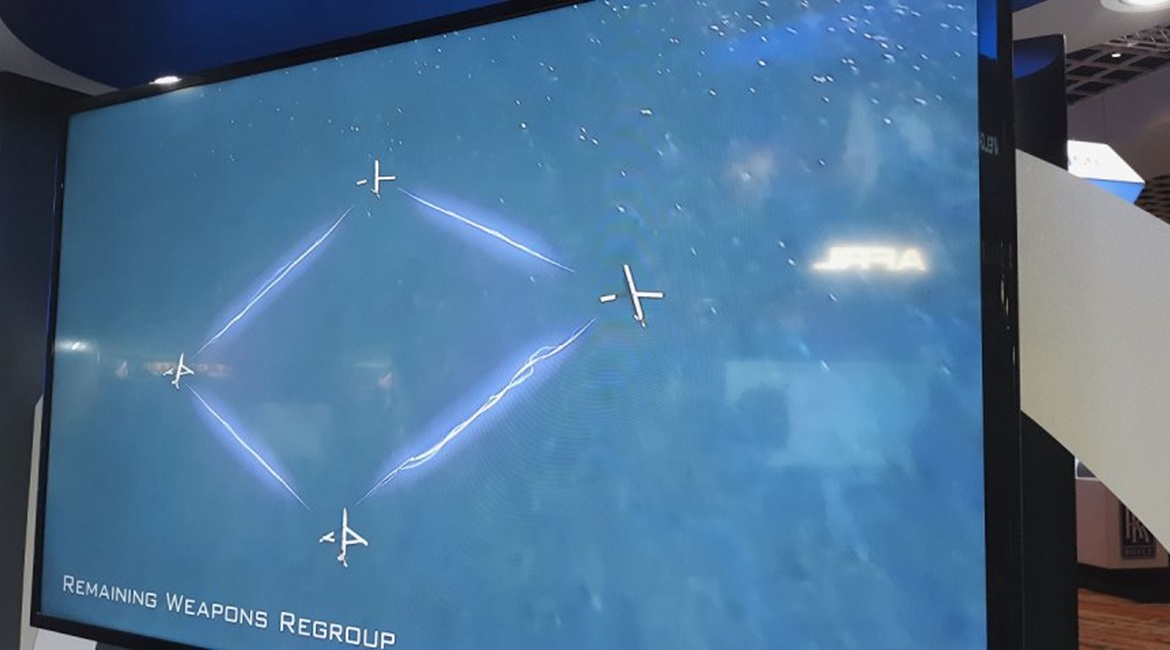
The US Air Force Research Laboratory (AFRL) is planning to start demonstrations in late 2020 of its Golden Horde networked collaborative weapons effort, one of the US Air Force’s (USAF’s) top science and technology (S&T) programmes.
Golden Horde is a group of technologies the USAF is evaluating for network collaborative autonomous capabilities within existing weapon systems, Colonel Garry Haase, AFRL munitions directorate commander and director at Eglin Air Force Base (AFB), Florida, told Jane’s on 28 February at the Air Force Association’s (AFA’s) Air Warfare Symposium. The service, he said, will experiment with how to have a group of weapons talk and interact with one another and pass data back and forth into a network so they can better prosecute targets and better prioritise.

Collaborative Small Diameter Bomb 1s (CSDB-1s) regroup during a video of a Golden Horde demonstration. The video was displayed on 28 February at the AFA Air Warfare Symposium. (Jane’s/Pat Host)
The USAF wants its Golden Horde weapons to be able to reform and reprioritise targets if some are taken out. The AFRL refers to this as ‘playcalling’. A play is an established collaborative behaviour enabled, or disabled, when certain predefined conditions are met by the swarm.
Golden Horde uses a collection of plays called a ‘playbook’. Loaded prior to a mission, the playbook provides a choice of plays from which the weapons can choose.
The upcoming demonstration will centre around what the AFRL is calling the Collaborative Small Diameter Bomb 1 (CSDB-1), integrated by Applications and Research Associates Inc (SARA), which is based on the Boeing GBU-39B/B Laser Small Diameter Bomb (LSDB) form factor. Col Haase said AFRL will use multiple CSDB-1s and have them work together to prosecute a target.
Looking to read the full article?
Gain unlimited access to Janes news and more...




